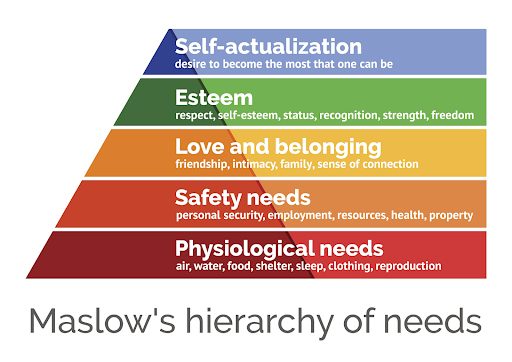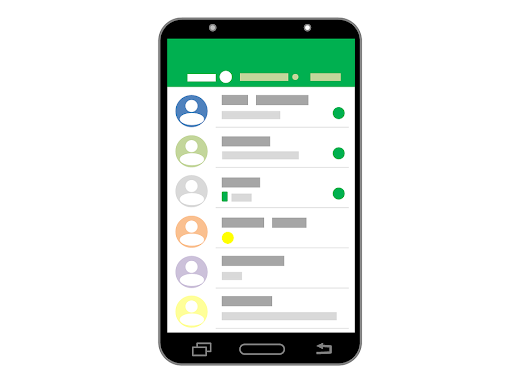How to Use Customer Service Psychology to Deliver Better Support

This post is also available in:
![]()
![]()
![]()
![]()
“The customer is always right” is one of the most well-known mantras of customer service. However, those who’ve worked in the field know this is often wrong. With issues ranging from customers requesting services your company doesn’t provide to returning products they’ve used and damaged. How can you advise these customers without immediately setting them against you? This is where some nifty customer service psychology comes in. It’s all about understanding customer thoughts and needs so you can respond calmly and clearly and prompt them to do the same.
In this article, we look at some top psychology theories for customer service and techniques and strategies to put in place to deliver better support.
Why Use Customer Service Psychology?
Customer service can sometimes be a guessing game of handling the different customers you interact with. Humans are capable of a whole host of emotions and react in various ways to a single response from you. However, if you want your business to boom, you need to be getting customer service right every time.
Psychology can shed light on how customers think and create fruitful and positive conversations. It’s surprisingly easy too – I promise, we’ll keep the technical jargon to a minimum, and there’ll be no mention of Freud! Anyone can do it, and knowing how to set the stage for good customer conversations makes reaching positive outcomes a whole lot easier.

Customer Service Theories
Within psychology, there are various theories concerning why people act the way they do. Some are useful to have an awareness of when working in customer service and can inform company strategies and methods to help you provide high-quality service. Most are things you probably already subconsciously know, so it’s just about recognizing how to get the most from them.
Hierarchy of needs
If you’ve come anywhere close to psychology before, you’ve probably heard about Abraham Maslow’s hierarchy of needs. In simple terms, there are specific basic needs people have to fulfil before they can concern themselves with other higher-level needs.
For example, it’s tough to focus on achieving your full potential if you constantly worry about how hungry you are. You need to deal with the need for food before tackling your life’s purpose.
Some of these needs inform how customers react to your company. Poorly written instruction manuals or confusing explanations may make customers feel unaccomplished and damage their esteem. Or ambiguous delivery times and schedules may affect the need for security.
Considering where customer issues may correspond to Maslow’s hierarchy can help you and your customer service team better know your customers and deliver the support they need. For example, clear communication is one way to address issues regarding your delivery services. This approach will assist in preventing frustration and meeting their need for reliability and trustworthiness.

The halo effect
We all have biases toward particular brands and people, either in favor or against them. Think of the plumber your mum can’t stop raving about to the neighbors, the dodgy local restaurant everyone avoids, or the friend who makes a killer carrot cake. It doesn’t matter what the person or brand does to some extent. You’ll always be biased whenever they come up.
Make sure your customers have a positive bias toward you to give your company the halo effect. Positive interactions and good outcomes with customers will put you in a favorable light. This has its perks, from winning recommendations via word of mouth through loyal customers giving you the benefit of the doubt in tricky situations. It also makes it easier to maintain good customer relationships over long periods.
Instant gratification
You’ve probably heard this term regarding social media before. Essentially, people like to receive things instantly. Social media translates to wanting everyone to admire our super aesthetic lunches before we even finish eating them.
However, instant gratification has a broader reach than online appreciation. Whether wanting webpages to load or parcels to arrive in the post, the quicker it happens, the better.
This can be incorporated into your customer service and gives additional background to many customer complaints. The longer you keep people waiting, the more resentment they are likely to have toward you before you’ve even started.
An excellent place to begin is looking into your average customer wait times and finding out “what is AHT?” Keeping on top of customer complaints with timely responses can completely transform the atmosphere when proposing solutions.

Reciprocity
Have you ever received a Christmas card from someone, only to think, “Oh bother, now I have to send one back!”? That’s the psychology of reciprocity kicking in. When people receive something, they want to give something in return.
We like to give more or less willingly, depending on our relationship with the recipient (and the reason for reciprocity). We’ll happily buy a round of drinks after another member of our group does. However, perhaps we’ll only reluctantly write a thank you note to a great-aunt for the itchy jumper she thought was a wonderful birthday gift.
You can bring this into your company strategies and customer service too. Many businesses will send offers and one-time gifts to their supporters and subscribers. By the theory of reciprocity, the customers then give something back, usually their loyalty. Similarly, giving helpful advice, discounts, or gifts as part of customer service can also trigger reciprocity.
Putting Psychology into Practice
Now we’ve covered the theory; it’s time to put it into action. Knowing this is only handy if you can implement these theories into your customer service to deliver better support. You can set some easy things in motion to harness your customer service psychology knowledge and get the most out of it.

Availability
As mentioned above, people don’t like waiting. This applies to all aspects of your customer service, including chat UI. Having automated chat features on your website or a voice bot means customers get an instant acknowledgement that their request or problem has been received at any hour of the day.
In some cases, a voice bot will be enough to resolve the issue, but where it isn’t, make sure your customer service team is on hand to fix the situation quickly.
Solve issues
The sooner you solve issues, the happier your customers will be. Make sure you’re dealing with underlying pain points customers may have as well as more obvious problems.
Where a solution is not immediately possible, be transparent with customers about what steps need to be taken and what information is required. Using first call resolution metrics will show you how well your company is solving issues during the customer’s initial contact.
Check-in with customers regularly
As part of maintaining your shiny halo, regularly interact with customers, whether they’re on a mailing list, scrolling through your website, or browsing in a physical store. Reminding them you’re there helps to build a rapport, so should they have any queries, they already have a sense of familiarity with your customer support team.

Adapt your tone
Who you’re speaking to should dictate how you talk to them. An expert in the field of your services will probably appreciate a more technical tone from your customer service team. On the contrary, an older person may require more straightforward explanations while keeping the tone respectful.
Adapting to whoever approaches you means you can offer the best support possible and leave them with a great impression.
Keep your promises
Hand in hand with keeping your promises is avoiding outlandish claims you can’t hope to follow through. If you’re not sure about something, be honest. It’s worse for something not to live up to your claims rather than outperforming the expectations set.
The more accurate your promises, the more trustworthy your reputation as a company. It’s all about treating the customer with dignity and not trying to pull the wool over their eyes.
Quality over quantity
It shouldn’t feel like a race to tick everyone off the list when dealing with customers. Customers want to be heard. Showing your customer service team cares for their needs builds loyalty.
This doesn’t mean every interaction requires weeks of relationship-building – make sure each step in your support process is necessary and worthwhile for the individual you speak to.

Be one step ahead
The ability to anticipate issues, questions, or future needs is a great skill to have as part of your customer service. It shows a holistic consideration for the specific requirements of a customer and an ability to go above and beyond what’s expected. It indicates your company values its customers more than solving their immediate problems and leaving them to struggle later on.
Have an attitude of gratitude
Possibly the easiest point to enact on this list is saying thank you. Thanking customers for their business, reviews, and criticisms shows the value of these things to your company. It acknowledges the customer and their relationship with you.
It might seem strange to thank people for negative comments, but these allow you to improve and highlight previously unnoticed growth areas.
Understand Your Customers to Deliver Better Support
Although they may sometimes act like it, customers aren’t some rare alien species. Their wants and needs are likely to be similar to your own and lead to the same reactions.
Having a bit of understanding about the psychology behind this and with these tips up your sleeve, you can make your customer service not only run smoother but provide better support.
Make the change today, and you’ll see the benefits in no time.
Guest Author Bio: Grace Lau – Director of Growth Content, Dialpad

Grace Lau is the Director of Growth Content at Dialpad, AI-powered cloud communication and hosted contact center platform for better and easier team collaboration. She has over 10 years of experience in content writing and strategy. Currently, she is responsible for leading branded and editorial content strategies, partnering with SEO and Ops teams to build and nurture content. Here is her LinkedIn.



Comments
0 commentsNo comments yet